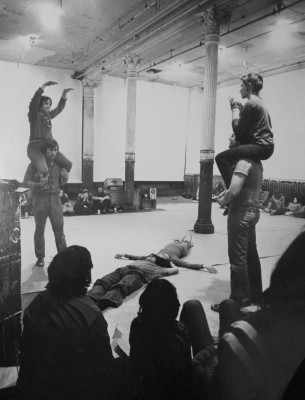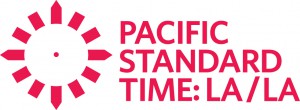 Performance view of artist Juan Downey’s Energy Fields at 112 Greene Street, New York (1972). Photo Credit: The Estate of Juan Downey, New York
Performance view of artist Juan Downey’s Energy Fields at 112 Greene Street, New York (1972). Photo Credit: The Estate of Juan Downey, New York
Claremont, Calif. (March 31, 2016)—Pitzer College Art Galleries and Los Angeles Contemporary Exhibitions (LACE) will mount Juan Downey: Radiant Nature, a two-part exhibition on the early performance-based works of Chilean-born artist Juan Downey as part of Pacific Standard Time: LA/LA, an initiative of the Getty, in which arts institutions across Southern California will join together to explore the vast subject of Latin American and Latino art in dialogue with Los Angeles.
The Getty Foundation awarded Pitzer College and LACE a $200,000 implementation and publication grant following an initial $120,000 grant to research the proposed exhibition, which will be held on both the Pitzer College campus and at LACE.
Juan Downey worked in many mediums, including sculpture, performance art, installation and video. Although Downey is best known for his video work Video Trans Americas (1973–76), Juan Downey: Radiant Nature will focus on his earlier bodies of work, specifically his electronic sculptures, performances and “Life-Cycle” installations. Exhibited between 1967 and 1975, these works investigated the essence and overlap of technology, energy, the environment and politics through interactive creations that turned viewers into active participants. Downey experimented with ways to probe the relationship between humans and machines and critique the claim by ethnographers that they can be objective observers, uninfluenced by their own histories and cultural norms.
Many of Downey’s experimental and ephemeral works have not been seen since their original presentations more than 40 years ago. Pitzer College Art Galleries and LACE will reconstruct and restage some of these pieces based on new research that was funded by the Getty and conducted by Ciara Ennis, director and curator of Pitzer College Art Galleries, and Radiant Nature co-curator Robert Crouch, executive and artistic director of the Pasadena Arts Council. These are works that might otherwise fall “into the margins of art history,” Ennis said.
At Pitzer College, the exhibition will feature an educational component that invites students and faculty to explore the relationship between art, social responsibility and technology, according to Ennis.
“The interdisciplinary environment of Pitzer College, with its focus on social justice and diversity, provides the perfect context for exploring the early work of Juan Downey,” she said.
 Pacific Standard Time: LA/LA will present a wide variety of important works of art while taking a fresh look at major artistic movements and contemporary artistic practices. Pacific Standard Time: LA/LA takes place from September 2017 through January 2018 at more than 60 cultural institutions from Santa Barbara to San Diego, and from Los Angeles to Palm Springs. Pacific Standard Time is an initiative of the Getty. The presenting sponsor is Bank of America.
Pacific Standard Time: LA/LA will present a wide variety of important works of art while taking a fresh look at major artistic movements and contemporary artistic practices. Pacific Standard Time: LA/LA takes place from September 2017 through January 2018 at more than 60 cultural institutions from Santa Barbara to San Diego, and from Los Angeles to Palm Springs. Pacific Standard Time is an initiative of the Getty. The presenting sponsor is Bank of America.